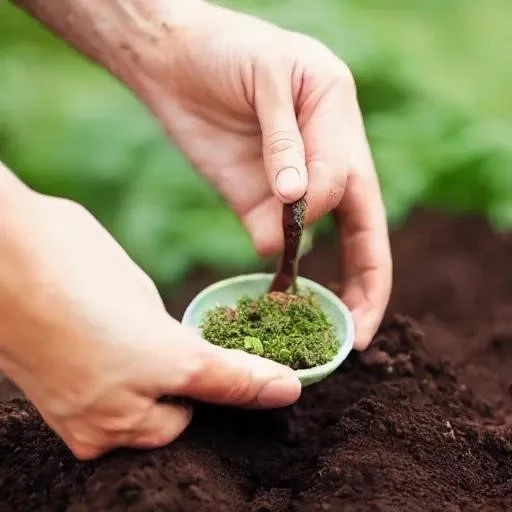Today is 10/01/2025 09:51:31 ()
Embarking on the journey of growing your own food is more than just a hobby; it’s a profoundly rewarding adventure that reconnects us with nature’s incredible bounty and the simple‚ unparalleled joy of fresh‚ homegrown produce․ For many aspiring horticulturists‚ the initial prospect of cultivating a thriving vegetable garden can seem daunting‚ a complex maze of soil science‚ planting schedules‚ and pest management․ Yet‚ a vibrant‚ productive garden is remarkably within reach‚ even for the absolute novice․ Imagine stepping outside your door‚ basket in hand‚ to harvest sun-ripened tomatoes bursting with flavor‚ crisp lettuce‚ or fragrant herbs‚ all nurtured by your own hands․ This isn’t a distant fantasy; it’s a wonderfully achievable reality waiting to enrich your life‚ your plate‚ and your well-being․
The journey from seed to supper is filled with learning‚ discovery‚ and immense satisfaction‚ profoundly impacting not just your diet but also your appreciation for sustainable living․ While some may caution about the initial investment or the learning curve‚ the long-term benefits—both tangible and intangible—far outweigh any perceived hurdles․ By integrating practical‚ expert-backed strategies and embracing a forward-looking mindset‚ you can circumvent common pitfalls‚ transforming your patch of earth into a verdant oasis․ We’re here to demystify the process‚ offering indispensable insights and actionable advice‚ ensuring your inaugural gardening season is not merely successful‚ but truly spectacular‚ setting the stage for years of abundant harvests․
Here’s a quick guide to kickstart your vegetable gardening adventure:
| Category | Key Information for Beginners | Reference/Resource |
|---|---|---|
| Starting Point | Begin small with 2-3 beds (4×8 or 4×10 feet)‚ focusing on vegetables you genuinely enjoy eating․ Expand gradually each year as your confidence and knowledge grow․ | Garden․org (for planting by zip code) |
| Site Selection & Soil | Choose an area receiving 5-6 hours of direct sunlight daily‚ protected from high winds․ Basic garden soil is often adequate; ensure it holds moisture without standing water․ Consider seed-starting mix for indoor seedlings․ | Almanac․com Planting Calendar |
| Crop Choices | Prioritize beginner-friendly‚ high-impact crops like tomatoes‚ peppers‚ and pumpkins․ Homegrown tomatoes‚ in particular‚ offer an unparalleled taste experience․ Plant tall plants north of shorter ones to maximize sun exposure․ | GrowVeg․com (for garden planning) |
| Watering & Care | Water deeply and less frequently‚ encouraging roots to seek moisture deeper in the soil․ Don’t strive for perfection in year one; basic granular tomato fertilizer can be used broadly for initial success․ | MIGardener Videos (approachable tutorials) |
| Pest Control & Winter Prep | For brassicas (kale‚ cabbage)‚ consider Bt spray․ For winter gardening in colder climates‚ start seedlings immediately and use low tunnels or frost covers for protection․ | Farmers’ Almanac Companion Planting Guide |
The True Cost and Unrivaled Value of Homegrown Produce
While the romantic notion of “70 supplies yielding $600 worth of produce” often circulates‚ experienced gardeners understand the initial financial outlay can be more substantial than commonly advertised․ Investing in raised beds‚ for instance‚ can quickly accrue costs; a modest 1․8m x 1m x 40cm bay might require around $120 for quality soil alone‚ with the bed components adding another $100․ Then there are recurring expenses: weed netting‚ mulch‚ seeds‚ pest control‚ and‚ crucially‚ water․ Realistically‚ a single bed might yield $100-$150 worth of vegetables per season in its early stages․ However‚ this perspective often overlooks the profound‚ long-term economic advantages and the incomparable quality․ By integrating dedicated composting practices‚ enriching your soil becomes incredibly cost-effective over time‚ transforming what was once an expense into a virtually free‚ nutrient-dense resource․ Consider the remarkable return on investment from crops like pumpkins; two bushes‚ allowed to creep into available space‚ can effortlessly produce 100 kilos of pumpkins‚ representing around $300 in grocery store value for a mere $30 compost investment․ This exemplifies the truly sustainable and rewarding nature of gardening once the foundational elements are established․
Cultivating Success: Start Small‚ Grow What You Love
The most effective strategy for beginners is undeniably to “start small and grow what you eat․” Overwhelm often stems from ambitious garden sizes‚ not from the number of varieties cultivated․ Initiating your endeavor with two or three manageable 4×8 or 4×10-foot beds‚ whether raised or in-ground‚ provides a perfect foundation․ This measured approach allows you to learn the rhythms of your garden without feeling inundated․ As your confidence blossoms and your expertise deepens‚ you can gracefully expand your operation year after year․ Critically‚ prioritize planting vegetables that genuinely excite your palate․ There’s a profound difference in motivation when you know your efforts will culminate in a harvest you’re eager to consume․ The experience gained from nurturing cherished crops will organically build your gardening acumen․
Demystifying Your Plot: Site Selection and Soil Secrets
Choosing the right location is paramount‚ serving as the cornerstone of your garden’s success․ Select an area that reliably receives 5-6 hours of direct sunshine daily‚ a non-negotiable requirement for most vegetables․ Equally important is protecting your nascent plants from harsh‚ high winds that can easily damage tender foliage․ Regarding soil‚ don’t overcomplicate it․ Your existing “dirt” is likely perfectly adequate‚ provided it isn’t excessively sandy or clayey․ The ideal garden soil holds moisture effectively but drains freely‚ preventing waterlogging․ For those embarking on the rewarding practice of starting seeds indoors‚ a specialized seed-starting mix can offer an optimal environment‚ although it’s not strictly mandatory for every type of seed․ At its most fundamental‚ gardening involves simply placing seeds in soil‚ providing water‚ and patiently awaiting nature’s magic․ Remember‚ your garden won’t materialize overnight‚ fostering a valuable lesson in patience and observation․
Choosing Your Champions: High-Impact Crops for Beginners
For first-time gardeners‚ selecting the right crops can significantly boost morale and ensure early successes․ Hot-weather staples like peppers and tomatoes are exceptionally rewarding‚ often delivering bountiful yields and an unparalleled taste experience․ Homegrown tomatoes‚ in particular‚ are a revelation‚ rendering store-bought varieties tasting like “wet cardboard” by comparison․ This dramatic flavor differential also extends to fruits like strawberries‚ which‚ when cultivated at home‚ reveal a depth of flavor often sacrificed for size in commercial breeding․ While many crops can be started directly from seed in the ground‚ commencing with established plants for your hot-weather favorites can provide an immediate head start․ For brassicas such as kale‚ collards‚ broccoli‚ or cabbage‚ proactively investing in a Bacillus thuringiensis (Bt) spray from your local garden center or Amazon is a remarkably effective preventive measure against common caterpillar pests‚ safeguarding your harvest․
Embracing the Seasons: Extending Your Harvest
While hardiness zones offer a general guideline‚ local microclimates and specific winter conditions demand a more nuanced approach․ In regions experiencing lows of 5-10°F‚ virtually all but the most resilient plants will require robust winter protection․ Yet‚ the colder months needn’t signal the end of your gardening endeavors․ Crops like mache‚ spinach‚ sorrel‚ kale‚ and various Asian greens (mizuna‚ tatsoi) can often tolerate cooler temperatures without extensive protection․ For an expanded winter bounty‚ simple “low tunnels”—easily constructed and covered with plastic or frost cloth—become incredibly effective‚ transforming your garden into a year-round producer․ The most critical step for a successful winter harvest‚ however‚ is to initiate seedlings immediately‚ leveraging the diminishing daylight hours for robust growth before the deepest cold sets in․ This proactive planning is key to enjoying fresh greens even when snow blankets the ground․
Cultivating Resilience: The Gardener’s Mindset
The most crucial “tip” for any beginner is to “chill!” Gardening is an adventure‚ not a battle․ It’s perfectly normal for things to go awry; expect some plants to falter‚ some experiments to fail․ This is an integral part of the learning process․ As one seasoned gardener wisely advises: “Stuff is gonna die‚ next year a little less will die‚ year after that nothing will die‚ and the year after that you’ll be giving away produce․ DON’T GIVE UP!!” Success in gardening is not about achieving immediate perfection‚ but about persistent learning and adapting․ Use online resources like garden․org‚ inputting your zip code to refine planting times‚ and explore approachable video guides from channels like MIGardener․ Water your plants deeply‚ encouraging robust root development‚ rather than merely superficial frequent sprinklings․ Embrace the journey‚ ask questions as they arise‚ and delight in every small victory․ Your garden will not only feed your body but also nurture your spirit‚ evolving with you season after season into a wonderfully productive and deeply satisfying endeavor․






